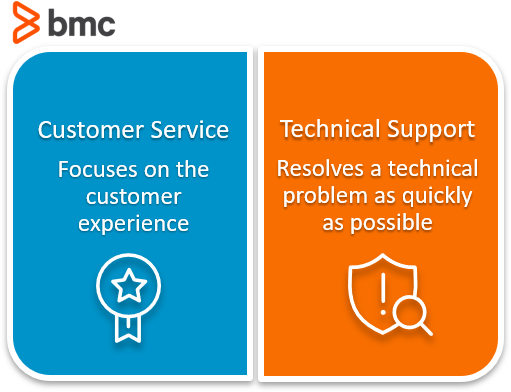Business organizations are revisiting their workforce strategies in response to digital transformation. And DevOps and Agile environments, which are today widely embraced, often result in:
- New roles
- New team structures
- New hierarchies
While role distribution and the structure of functional teams differs depending on your overall IT organization, the types of functions adopted by IT teams remain consistent. With these changes in mind, let’s look at the various types of IT/tech teams.
Types of IT teams
Let’s look at a variety of IT teams. There is no rule that your company must have any single team listed below. Instead, titles, structures, and functions will vary from company to company, yet similar themes emerge.

Development teams
Dev teams focus on developing a feature, product component, or an entire project.
The team may be assembled to either:
- Solve specific technology problems and deliver a working solution
- Follow an iterative, ongoing development process, such as in DevOps and Agile environments.
Development teams are usually not permanent. Groups of new cross-functional experts may be assembled to deliver subsequent release iterations or across different product features. While most organizations limit the size of individual teams, developers following DevOps and Agile SDLC frameworks tend to collaborate readily with cross-functional departments and teams.
Read more:
- Software Development Best Practices
- Software Project Management Phases & Best Practices
- Top Conferences for Programming & Software Development
Operations teams
IT Operations remains relevant despite the prevalence of cloud computing, infrastructure automation, and AIOps solutions. The complexity and importance of ITOps has increased in large-scale organizations and early Ops involvement is key to successful DevOps adoption.
Operations teams are also known as Ops, ITOps or I&O, short for infrastructure & operations.
No matter the name, these teams are responsible for making the IT infrastructure work and provisioning services necessary for rapid development sprints and feature release cycles. The teams are also responsible to ensure that organizational policies and ITSM principles are implemented across the development teams. Several roles in operations teams are permanent, especially those focused on infrastructure management, maintenance, and monitoring activities.
Read more:
- I&O Organizations Defined: Roles, Structures & Trends
- ITOps, DevOps & NoOps Explained
- IT Operations Best Practices
DevOps teams
Traditionally dev teams and ops teams worked separately, with separate leadership, responsibilities, and objectives to achieve. Typically the teams even worked in separate areas and rarely communicated. This ‘silos’ culture led to poor communication and collaboration among these teams.
The major organizational culture shift of DevOps successfully broke this silos mentality, bridging the gap between the Dev and Ops teams by making them:
- Work together
- Share responsibilities
- Take full ownership of the software they deliver throughout its software lifecycle
Nowadays, DevOps is widely embraced by the IT industry, including leading tech companies such as Amazon, Google, Netflix, and BMC. More recently, companies are looking at how to spread the principles of DevOps across the entire organization, beyond IT.
DevOps teams can include any number of engineers, developers, operations experts, and more. Often you’re not looking for a single explicit set of skills. Instead, you want each DevOps team member to have a variety of experience. One DevOps teammate might specialize in front-end, and another on back-end.
Read more:
- DevOps Job Titles, Roles & Responsibilities
- DevOps Advice for Small, Medium & Large Organizations
- Guide to DevOps Certifications
- Top DevOps Conferences To Attend
SRE teams
Introduced by Google, site reliability engineering (SRE) has gained interest globally as DevOps practices and automation become essential capabilities for effective management of applications hosted in hybrid cloud environments.
An SRE team uses engineers with software development backgrounds to perform work traditionally done by an ITOps team. The goal for SRE engineers is to automate work that was previously done manually.
Read more:
- SRE Basics: Site Reliability Engineering Explained
- SRE vs DevOps: What’s The Difference?
- ITOps vs SRE: Comparing Approaches
Scrum teams
In a truly Agile environment, some or all IT types might work in scrums. Scrum teams can following a few different practices depending on their environment, but core concepts include working iteratively on a project, starting with a minimum viable products (MVPs), and adding features and functionality over time.
A typical scrum team works in two-week sprints, and holds daily, regimented meetings to update the team on status. A scrum team usually involves one or more developers/operational folks, plus a product owner and a Scrum master.
Read more:
- Intro to Agile with Scrum: 4 Tips for Getting Started
- Scrum Teams: What’s With All The Scrum Meetings?
- Scrum vs Kanban: A Comparison of Agile Methodologies
Quality assurance (QA) teams
These teams are assembled to ensure the quality of software delivered to end-users. QA teams are responsible for testing feature releases for:
- Issues with quality
- Known and unknown bugs
The ‘quality’ piece of QA may refer to attributes like performance, security, cost, compliance, privacy, and risk.
Current IT frameworks, such as DevOps, have blurred the lines between development and QA roles. While both functional teams are assembled independently with unique set of skills and expertise, they must collaborate early during the SDLC lifecycle to reduce waste processes and risk of releasing suboptimal products to end-users.
Read more:
- Quality Assurance (QA) in Software Testing: QA Views & Best Practices
- Testing in DevOps: Concepts, Best Practices & More
- Testing Automation Explained: Why & How To Automate Testing
Support teams
Support teams are dedicated to resolving technical issues facing IT users, including the internal workforce and external customers. You might separate support teams by function: the service desk/help desk to help internal uses, customer service for external customers, and technical support for solving technical issues.

Support teams work with ITOps personnel to:
- Reduce the number and severity of IT incidents
- Proactively resolve incidents
Technologies such as chatbots and AIOps are reducing human involvement in both customer-facing support and backend infrastructure monitoring activities. These interactions, however, must be standardized and customer-focused and evolve to meet the changing technical and business requirements of the organization.
Therefore, support teams may come from cross-functional departments and work closely with development and operations teams to meet these requirements.
Read more:
- Customer Service vs Technical Support: What’s The Difference?
- Swarming vs Tiered Support Models Explained
- Service Desk & Support Manager: Role Description & Responsibilities
- Service Desk Support Analyst: Roles & Responsibilities
- Service Desk Mission & Vision Statements
Security teams
Cybersecurity is a critical concern for all organizations. IT security activities are often performed by a group of dedicated IT security professionals. Identity and access management and change approval processes are common domains of IT security teams in DevOps environments, where infrastructure and service provisioning is automated to facilitate rapid development sprints and release iterations.
Security teams work with many partners, including:
- Business executives to establish security protocols and policies
- Development teams to reduce potential bugs and security loopholes
- Operations teams to ensure that ITSM activities adhere to the organizational security policies
- The broader organization to deliver cybersecurity training and education
Read more:
- What Is InfoSec? Information Security Explained
- SecOps Roles & Responsibilities for Your SecOps Team
- The Chief Information Security Officer (CISO) Role Explained
- SecOps vs DevSecOps: What’s The Difference?
Process teams
Process teams are permanent teams that focus on managing and improving IT systems to solve specific business problems. They may:
- Involve cross-functional experts working with Devs and Ops teams to reduce waste processes and streamline service management
- Collaborate with external service providers and customers as part of a process improvement project, since process teams typically own their projects end-to-end
DevOps organizations enhance the role of process improvement teams, from defining a process improvement project to managing implementation and monitoring the change process.
Tiger teams
Tiger teams are assembled only when you need to resolve a problem that is having a severe impact on the company. Tiger teams usually aren’t necessary for most incidents, but in the realm of problem management, a well-timed, well-staffed tiger team can mean the difference in preserving your company’s reputation.
Importantly, tiger teams cannot be determined in advanced. Only when the problem is recognized can you assemble the right team to attempt to fix it.
Read more:
- Tiger Teams: Solving Critical Problems
- Incident Management vs Problem Management: What’s The Difference?
- Reactive vs Proactive Problem Management
Virtual teams
These teams are temporarily assembled and work closely with the organization remotely or from an off-site location, typically on a contractual basis. Virtual team members assist development, QA, Ops, and security teams on tasks that can be performed without on-site presence.
These teams complement the skills portfolio of the organization as needed, allowing for scalability. For large enterprises, virtual teams across disparate geographic locations may work collectively on similar projects.
Assignments are typically limited to development or testing. For an external vendor engaged as a virtual team member, the task may not involve exchange of sensitive business information or mission-critical business tasks.
Read more:
Organizational structures in “startup culture”
In organizations following traditional workforce structures, IT teams were focused on technology-alignment. Experts on specific technology domains worked independently on their focus areas. The result was a siloed working environment with IT teams following conflicting goals that compromised business outcomes.
For instance, the goal for development teams was to push shiny new features to the market before their competitors. The goal for QA was to ensure each feature release was near-perfect in quality, security, and performance through concentrated development efforts.
The definition of teams and their types have evolved as large enterprises readily adopt the Lean Startup culture that’s marked by:
- Flat organizational hierarchy
- Quick decision-making
- Rapid team restructuring
Organizational structures have not entirely disappeared, but the job disciplines, roles, and functions of members across different types of teams are less restrictive in nature. Most progressive organizations inclined to flat hierarchical structures establish teams rich in cross-functional expertise. The result are reduced silos between different job disciplines and associated departments. Team members can come from diverse IT background and integrate multiple disciplines of the production chain. Devs, Ops, and QA share overlapping functional responsibilities that may evolve over the course of the SDLC.
Employees from other functional areas such as strategy, HR, marketing, sales, purchasing, and research may also be involved in IT-related decisions, interactions, and activities. It’s not that roles and obligations are no longer specified—instead, adherence to team formation and organizational structure has a new meaning as the startup culture prevails across organizations of all sizes.







